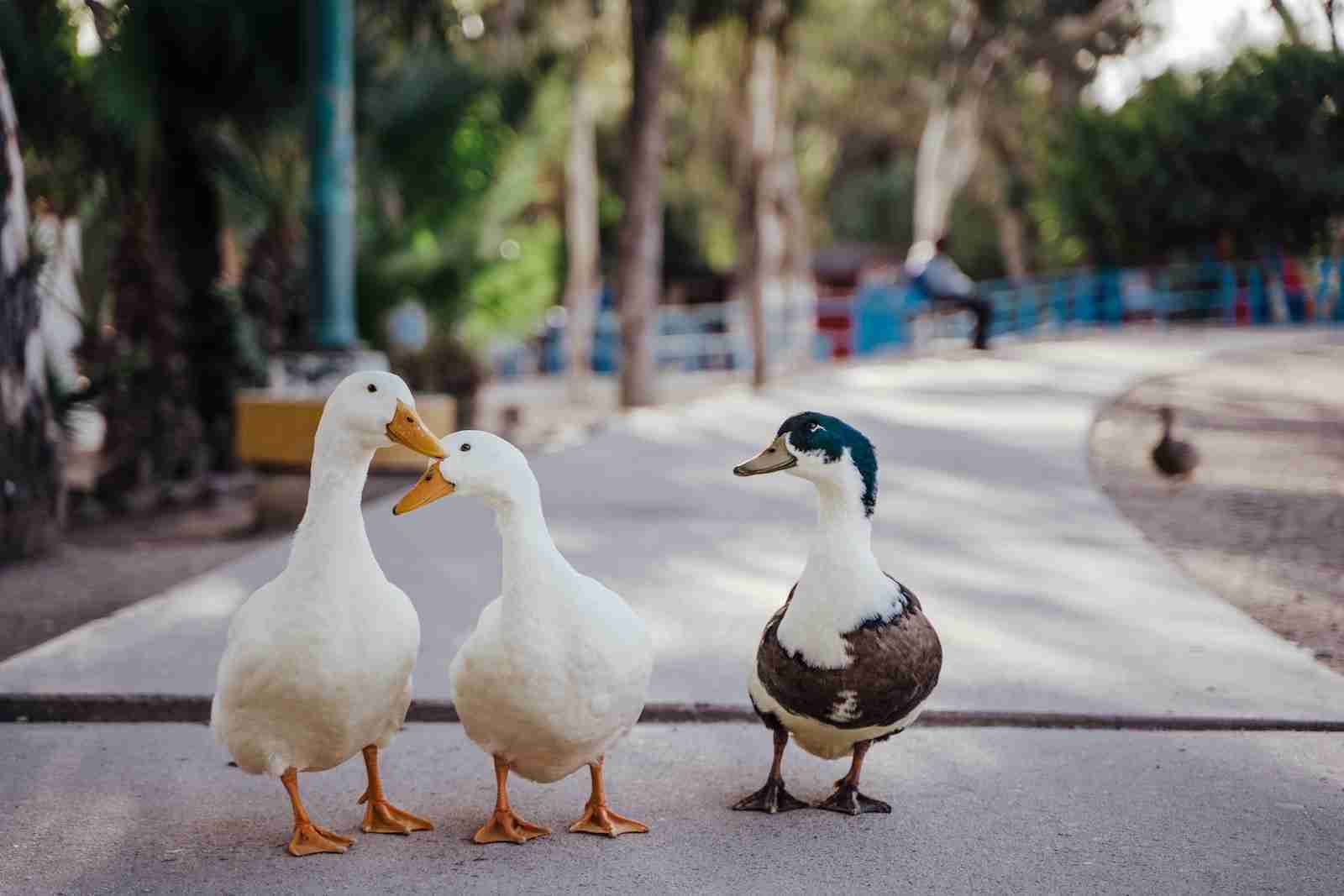25 Fun Facts About Ducks | Bet You Didn’t Know
1. Ducks have three eyelids.
When it comes to keeping their eyes clean and protected, ducks have a unique advantage. They possess three eyelids.
This not only helps in keeping their eyes moist but also aids in protecting them from debris, especially when they’re dabbling underwater.
2. Male ducks are called drakes females are hens.
In the fascinating world of ducks, identifying males and females comes with some fun terms. Males proudly take the title of drakes, flaunting their often brighter plumage. On the other hand, females are referred to as hens.
So, when you’re out bird-watching and want to sound like a pro, remember these names.
3. Ducks can sleep with one eye open.
Ducks have this amazing ability to sleep with one eye open. It’s a curious sight but incredibly practical for survival.
This tactic allows them to keep an eye out (literally) for potential threats. Imagine taking a nap while still being aware of your surroundings.
4. A duck’s quack can echo, despite the myth it can’t.
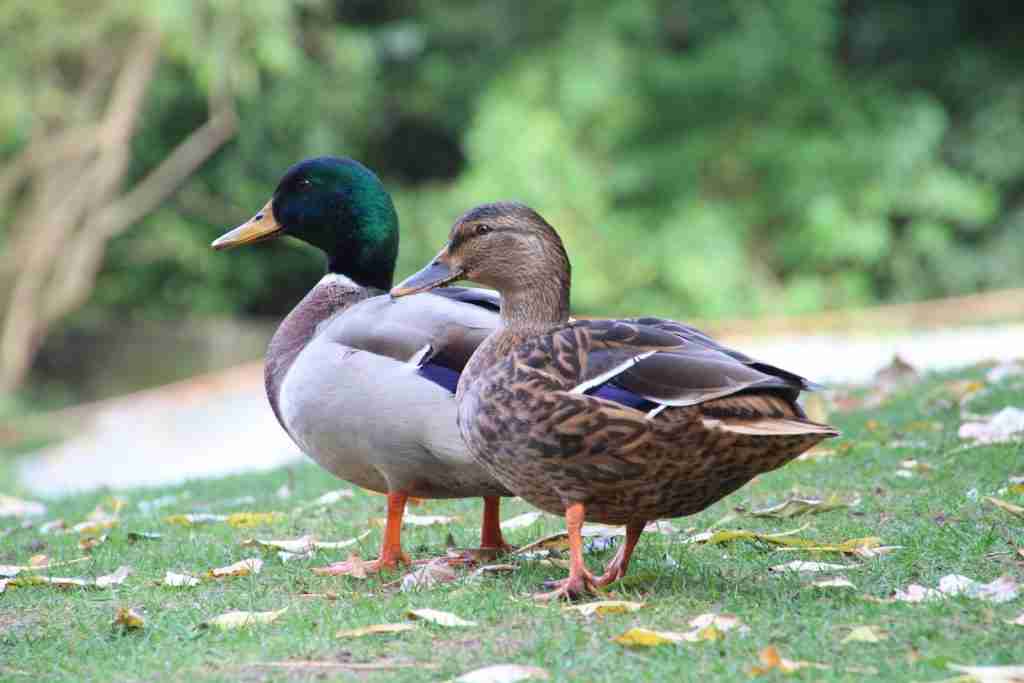
There’s a widely believed myth that a duck’s quack doesn’t produce an echo. But science tells us otherwise. In reality, a duck’s quack does echo, just like any other sound.
The difference might lie in the echo being soft and hard to hear.
5. Ducks have waterproof feathers.
When it comes to staying dry, ducks have an incredible natural advantage. Thanks to the special oil they produce and the structure of their feathers, ducks boast waterproof plumage.
This means, even after a deep dive or a swim, their body remains dry and warm. It’s one of those fun facts about ducks that showcases nature’s brilliant designs.
6. Ducks can fly up to 332 kilometers in a day.
Imagine traveling the distance between New York and Boston, but in the sky and without stopping.
Ducks can achieve this feat. They can fly up to 332 kilometers in just a single day. Their strong wings and remarkable stamina make them one of the most enduring fliers in the bird kingdom.
When talking fun facts about ducks, their impressive flying distance always stands out.
7. The duck’s bill is not solid. It contains blood vessels to help regulate temperature.
While a duck’s bill might look simple and firm, it’s a marvel of biology. Within that seemingly rigid structure, there’s a network of blood vessels.
These vessels play a vital role they help ducks regulate their body temperature. So, the next time you see a duck dipping its bill into cold water during winter, remember it’s using its bill like a natural thermostat.
8. Some ducks can dive up to 60 meters underwater.
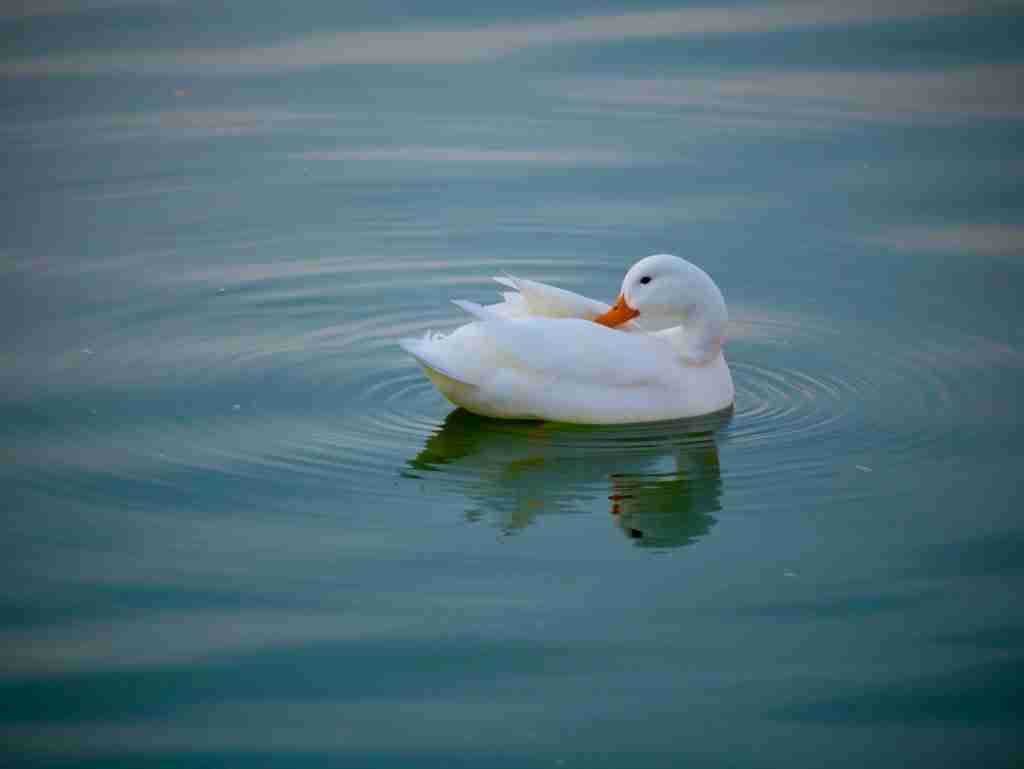
When ducks take the plunge, they go deep, While many birds skim the water’s surface, certain ducks can dive at astonishing depths, reaching up to 60 meters underwater.
That’s deeper than an Olympic-sized swimming pool. This capability not only helps them find food but also evade predators lurking above. It’s a testament to their adaptability and strength.
9. The smallest duck in the world is the Call Duck.
The smallest duck in the world is the Call Duck. This petite wonder, despite its diminutive size, has a charm that’s hard to miss.
Weighing in at less than 1 kg, it’s a testament to nature’s diverse designs. Next time you spot one, you’ll be admiring the feathered miniature of the duck family.
10. A group of ducks on land is called a brace.
Ducks have intriguing group names depending on their environment. If they cluster on land, you’d call that gathering a brace.
But take to the skies, and that group transforms into a flock. Meanwhile, on shimmering waters, the collective becomes a raft, floating seamlessly together.
11. Ducks have webbed feet, which act like paddles when swimming.
One of the defining features of ducks is their webbed feet. This design, perfected by nature, acts much like built-in paddles.
It ensures that every swim is smooth and efficient, making them masters of aquatic environments.
12. The longest recorded flight of a duck is 16 hours.
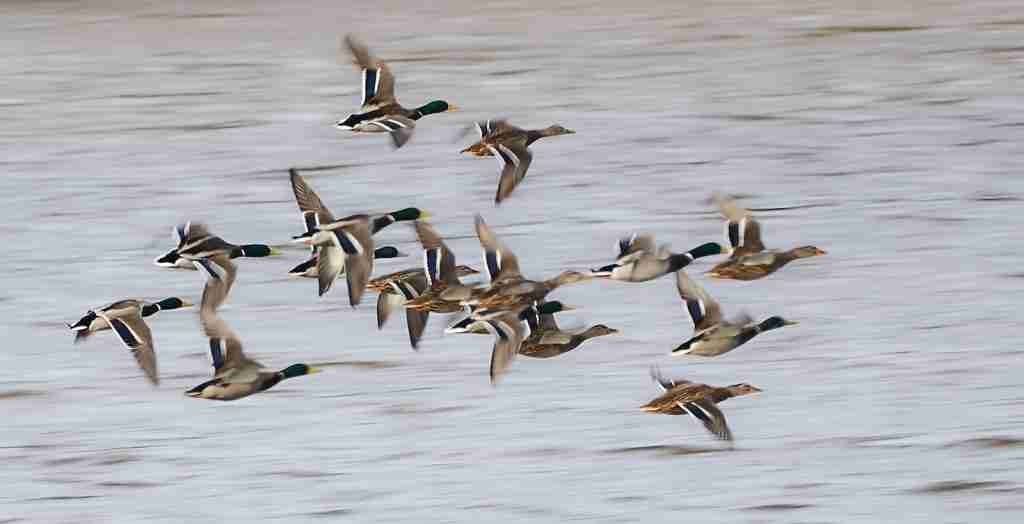
Fun facts about ducks reveal some impressive feats. One of the most astounding is that a duck has been recorded flying non-stop for a whopping 16 hours.
That’s like a human working two full shifts without a break. This remarkable endurance shows just how tenacious these birds can be when they set their wings to the wind.
13. Ducks have been domesticated for over 500 years.
Our connection with ducks stretches back centuries. Humans have enjoyed a close relationship with these birds for millennia.
Ducks have been domesticated for over 500 years, standing testament to their adaptability and our appreciation of their charm and utility.
14. Wood ducks have claws, allowing them to perch in trees.
Wood ducks showcase a rather unique trait among their feathered kin. They possess claws, a feature not commonly associated with ducks.
These claws are not just for show they enable wood ducks to grasp branches and perch comfortably in trees.
15. Ducks typically breed once a year, with the incubation period lasting about 28 days.
The lifecycle of ducks is punctuated by moments of anticipation and new beginnings. Ducks usually mate and breed just once every year.
Once eggs are laid, a waiting period begins, with mothers diligently incubating their precious cargo for approximately 28 days.
16. Ducks are omnivorous, consuming both plants and small animals.
Ducks dine on plants and critters.
Fun facts about ducks highlight their diverse diet. Ducks are true omnivores. This means they don’t limit themselves to just plants, they’re equally keen on small animals like insects and tiny fish.
Their varied diet helps ensure they get all the nutrients they need to thrive in their habitats.
17. The highest duck flight was recorded at 22,000 feet.
Among the many achievements of the duck world, the Ruddy shelduck deserves special mention. This particular bird has been recorded soaring to an astonishing elevation of 22,000 feet.
To put it in perspective, that’s nearly as high as some commercial planes.
When diving into fun facts about ducks, the Ruddy shelduck’s remarkable altitude feat showcases the adaptability and tenacity of these creatures.
18. Ducks help control pest populations.
Beyond their delightful presence in ponds and lakes, ducks play a crucial ecological role. By feeding on various insects and small aquatic creatures, they help keep pest populations in check.
This not only ensures a balance in the ecosystem but also aids in reducing potential nuisances for humans.
19. Ducks can be found on every continent except Antarctica.
The global reach of ducks is impressive. From the bustling wetlands of Asia to the serene lakes of Europe, these birds have made their home almost everywhere.
Ducks inhabit every single continent, with the sole exception being the icy expanse of Antarctica. Their adaptability and resilience truly make them global citizens.
20. A duck’s bones are so light that they can float in water.
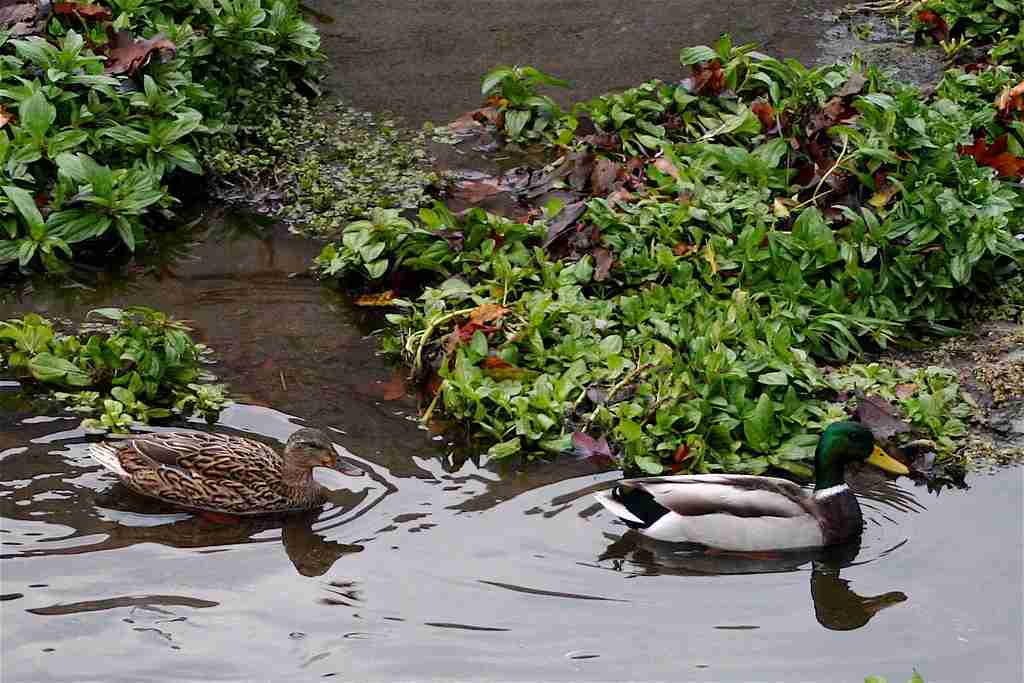
Fun facts about ducks often delve into their unique anatomy. One such intriguing fact is about their bones. Ducks possess incredibly light bones, so much so that they can float in water.
This lightweight skeletal structure aids in their buoyancy and makes them adept swimmers.
21. Ducks have a highly efficient circulatory system to keep warm in icy waters.
It’s awe-inspiring to learn how ducks stay warm in freezing conditions. Fun facts about ducks wouldn’t be complete without mentioning their advanced circulatory system.
This system efficiently circulates warm blood, ensuring they remain cozy even when swimming in chilly waters.
22. Ducks communicate with over 10 different sounds.
Ducks aren’t just about quacking they have a diverse vocal repertoire. While we often associate them with a singular quack sound, in reality, they communicate using over 10 different sounds.
Each sound conveys a specific message, be it a call for mating, a warning of danger, or simply expressing contentment.
23. Ducks can live from 2 to 20 years.
The lifespan of ducks is as varied as their species. Depending on factors like breed, environment, and care, a duck can live anywhere from a brief 2 years to an impressive 20 years.
This wide range showcases the adaptability and resilience of these charming birds across different habitats and conditions.
24. Ducks molt, or lose old feathers, and grow new ones.
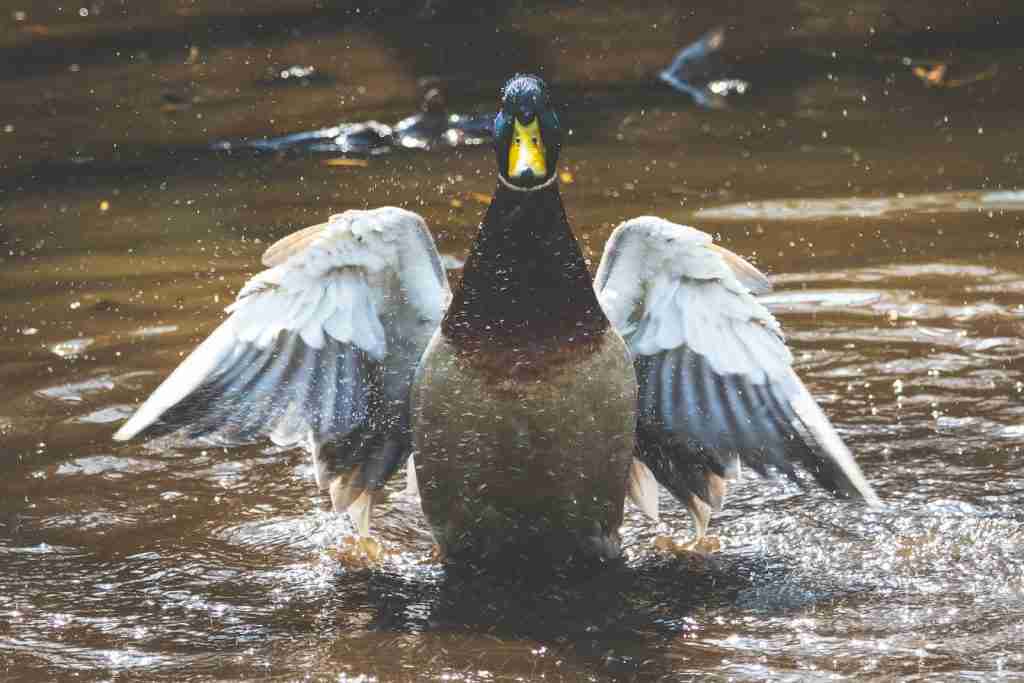
Ducks undergo the fascinating process of molting, where they shed and regenerate feathers. Contrary to the belief that it happens just annually, ducks experience this several times a year. Interestingly, the molting patterns differ between males and females.
There are two predominant molting phases one during the transition from winter to spring and the other in the summertime. It’s a natural wardrobe refresh in the duck world.
25. Duck mothers are known to fiercely protect their ducklings.
The bond between a mother duck and her ducklings is both touching and strategic. Mother ducks are known for their fierce protective instincts.
When danger looms, she emits a special come here call, alerting her ducklings to seek safety.
If a predator is too close for comfort, the mother duck might resort to a clever ruse, pretending to be injured.
FAQs
Ducks exhibit a commendable memory, especially regarding locations and routines. Their navigational skills during migrations are evidence of this. They can remember specific feeding spots, the layout of their environment, and even certain individuals, be it other ducks or humans they frequently encounter.
Ducks are more intelligent than they’re often given credit for. Their cognitive abilities manifest in problem-solving, understanding social hierarchies, and even in their mating rituals. Observations have shown that ducks can learn from experiences, recognize patterns, and have unique personalities that influence their interactions.
Wild ducks can be curious and may approach humans, especially if accustomed to being fed. However, their behavior varies while some might seem friendly, others remain wary and cautious. Their level of comfort largewaryt interactions with humans and their environment.
Ducks sleep in different places based on their type. Mallards usually sleep on land, while Wood ducks prefer to sleep on water. Also, many ducks like to sleep together in big groups. This helps them stay safe and find the best places to rest in their area.
Ducks don’t see well at night, but during the early morning and evening, they can see just fine. This is because their eyes can pick up ultraviolet (UV) light, which humans can’t see. So, even when it’s a bit dark for us, ducks have a clear view.

